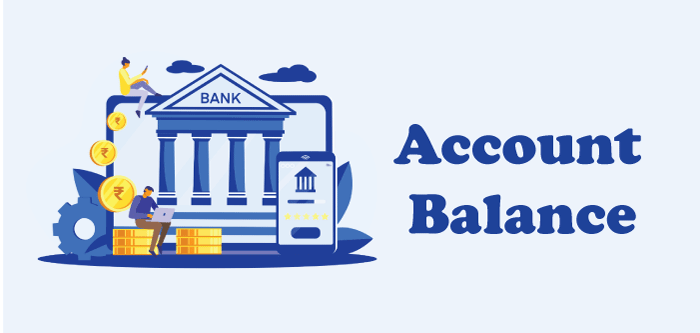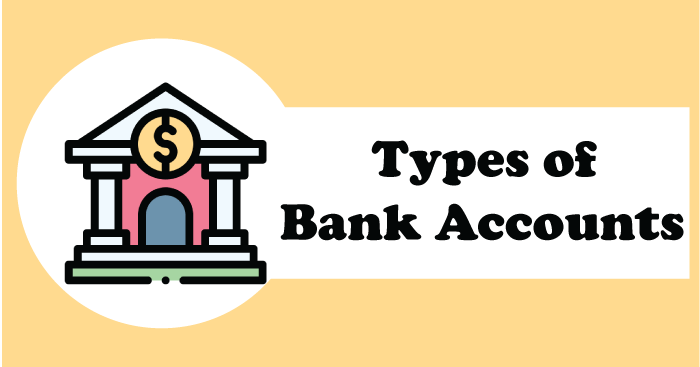Account Balance Definition, Types, ExampleAn individual's account balance, whether in the context of a savings or checking account, represents the amount of money on account at a specific point in time. Keeping track of an account's balance is essential since doing so can aid in better money management. You may benefit from becoming knowledgeable about the different sorts of accounts since it will enable you to make more educated decisions accordingly. 
What is Account Balance?The sum of money left in a bank account after all credit and debits are taken into account is the account balance or bank balance. It can also refer to the amount of money an individual or organization owes to a third party, such as a service provider. You may contact the bank via call, mail, in person, using their web app, or in person to inquire about your balance. Additionally, you can set up automated text or email notifications to notify you of balance changes. A negative account balance indicates a net debt, such as when a checking account is overdrawn. A financial bank account balance with regular expenses, such as a mortgage or energy bill, may also show a total outstanding amount owed. Understanding an Account BalanceYour account balance reflects all of your assets minus all of your liabilities. Because it considers all debt or liabilities, it is sometimes called your total worth (value) or overall wealth. Your account balance will show the current amount or worth of separate accounts with a banking institution, like a checking or broker account. Your account balance will probably fluctuate over time for stocks and other hazardous assets when market fluctuations in security prices occur. There is a balance feature in a lot of different financial accounts as well. You may often see the account balance for your energy bills and mortgage accounts. Your account balance often displays the sum owing for accounts with recurring expenses, like a water bill. Your debt to third-party institutions, such as a credit card company, utility provider, mortgage banker, or other lenders or creditors, can also be referred to as your account balance pending in respective accounts. The quantity of money accessible in your checking or saving accounts is referred to as the account balance in the context of banking. Your bank balance is the final sum that remains after all entries and credits have been equalized with any fees or debits. Due to outstanding transactions or unprocessed checks, your account balance occasionally does not accurately reflect the whole amount of your accessible cash. Example of Account BalancesIf you were using a credit card, it's possible that you made many transactions totaling $100, $50, and $25 while also returning something worth $10 or anything. For example, this will display a total of $175 in purchases and $10 for a refund of a product included in the account balance. The value of your account balance is determined by the net debit and credit balances, which comes to $165, which is $175 minus $10. In the instance of a checking account, based on the financial institution, if your beginning balance is $500 and you get credit through a check for $1,500 and write a check or set up a future automated payment for $750, your account balance may reflect $2,000 right away. However, the actual balance of the account is $1,250, which also includes the debit of $750. It's important to take care of accounting records, noting every credit and debit and then comparing your estimated balance to the number of financial statements each month. It may help prevent or determine hidden or unauthorized debits. Different Types of Account BalancesA balance is necessary for many different kinds of financial accounts. These are a few instances: 1. Bank Account Balance After registering all inputs and credits, subtracting fees, and paying debts, an individual or organization's entire amount in their savings or checking account is referred to as the "net worth". It is also known as the bank account balance. Due to the necessity for additional computations for some overdue obligations, the availability of funds in a bank account may not always accurately reflect the balance. 2. Loan Account Balance Every kind of debt, including credit card debt and student loans, is included in this category of balances. For example, a mortgage account is a distinct account balance as the borrower receives a sizable amount of money to buy a property and often repays the debt over a lengthy period. 3. Credit Card Balance It shows the sum owed on an account, along with any interest fees and past-due balances. After paying off all the loans, a credit card holder's "available credit" is the amount they can spend at any moment. What is the difference between Bank Balance and Available Credit?The issuing bank sets a credit card's spending cap, or the highest sum it may retain. You may utilize the credit currently available to you on your credit card to make purchases until they reach your allowed credit limit. The amount you can spend is referred to as your available credit. Your current credit limit determines how much you can still spend at any moment. To determine the amount of credit that is accessible, subtract the outstanding balance from the total credit limit and also consider any charges that have not yet appeared on balance. The amount of credit remaining on an account decreases as additional charges or spending are made. Some charges that are only momentarily in force may impact your available credit for a limited period. An illustration of it is making a hotel reservation and having a predetermined amount charged to your credit card. When a different source is used to pay for the accommodation, the hotel refunds you the original amount that was initially reserved on your credit card, thereby increasing your available funds limit. Types of Bank Accounts
You can choose from the following sorts of bank accounts when making your selection: 1. Current AccountAs they frequently handle sizable sums of money, traders, company owners, and entrepreneurs benefit most from having a current account. They are often zero-interest-bearing accounts that, however, include advantages like an overdraft capacity. 2. Savings AccountRegular deposit accounts with the least interest rate are known as savings accounts. You are normally only permitted certain monthly transactions with this form of the bank account. Also, there is often a limit on the amount of money you can transact on a daily basis. 3. Salary AccountA pay account might be a contract between your company and the bank. The bank deposits each worker's wages into this form of account at the pay period's beginning or end. 4. Fixed Deposit AccountA fixed deposit (FD) account allows you to set aside a specific sum of money while accruing interest at a fixed rate until the fixed deposit's expiration. FDs' maturity times might be between seven days and ten years. 5. Recurring Deposit AccountRecurrent deposits (RDs) have predetermined terms. To receive interest, you must deposit a predetermined sum of money timely (e.g., once per month or every three months). You often need to invest less money into RDs more frequently than FDs, which demand a lump sum investment at once. How can I find out the balance of my bank account?Checking your balances by logging in to your bank's application or website (or phoning the bank directly) is the most straightforward approach. Also, you can access or view the most recent transactions, which will provide you with the most recent credit/debit information that has happened in your account. Please be aware that there may be a lag (some period of time) between when a charge or deposit is processed and when the most recent transaction appears or is updated in your account. Which types of accounts have the facility of account balance?Your overall holdings are reflected in the form of account balances in your checking, savings, and brokerage accounts. Despite these, there can also be account balances for expenses, such as energy payments or a mortgage account.
Next TopicAccount Freeze
|
 For Videos Join Our Youtube Channel: Join Now
For Videos Join Our Youtube Channel: Join Now
Feedback
- Send your Feedback to [email protected]
Help Others, Please Share









